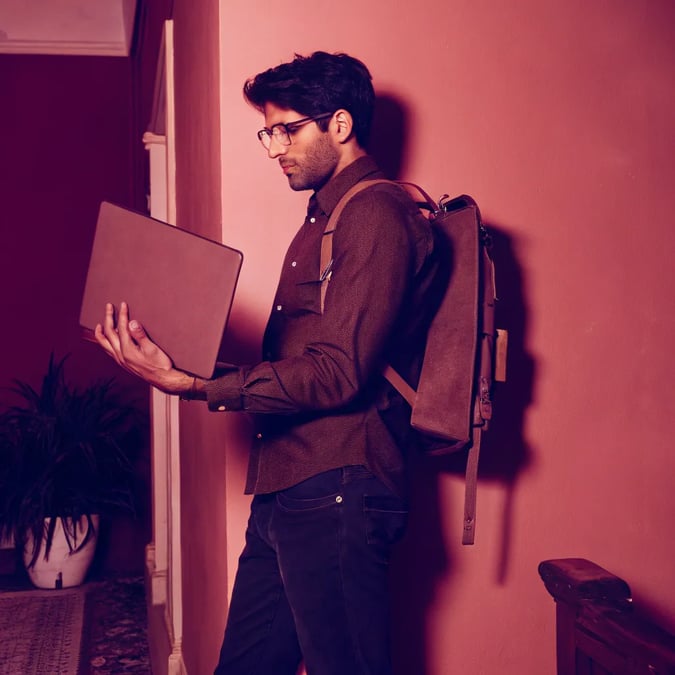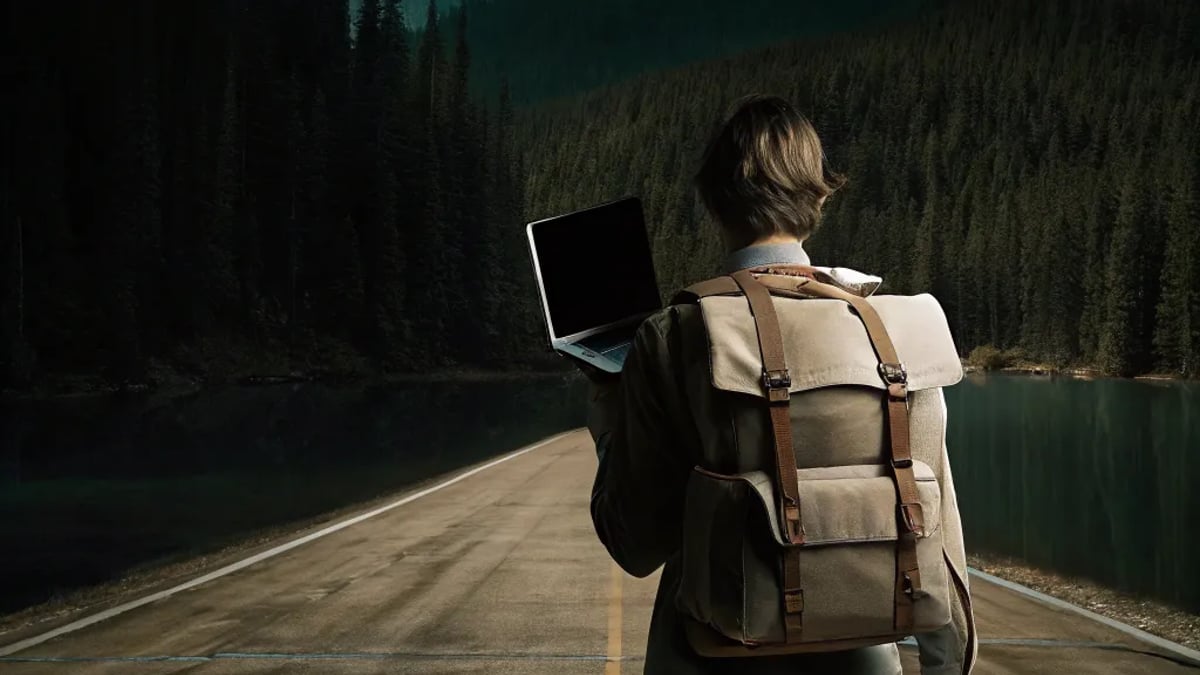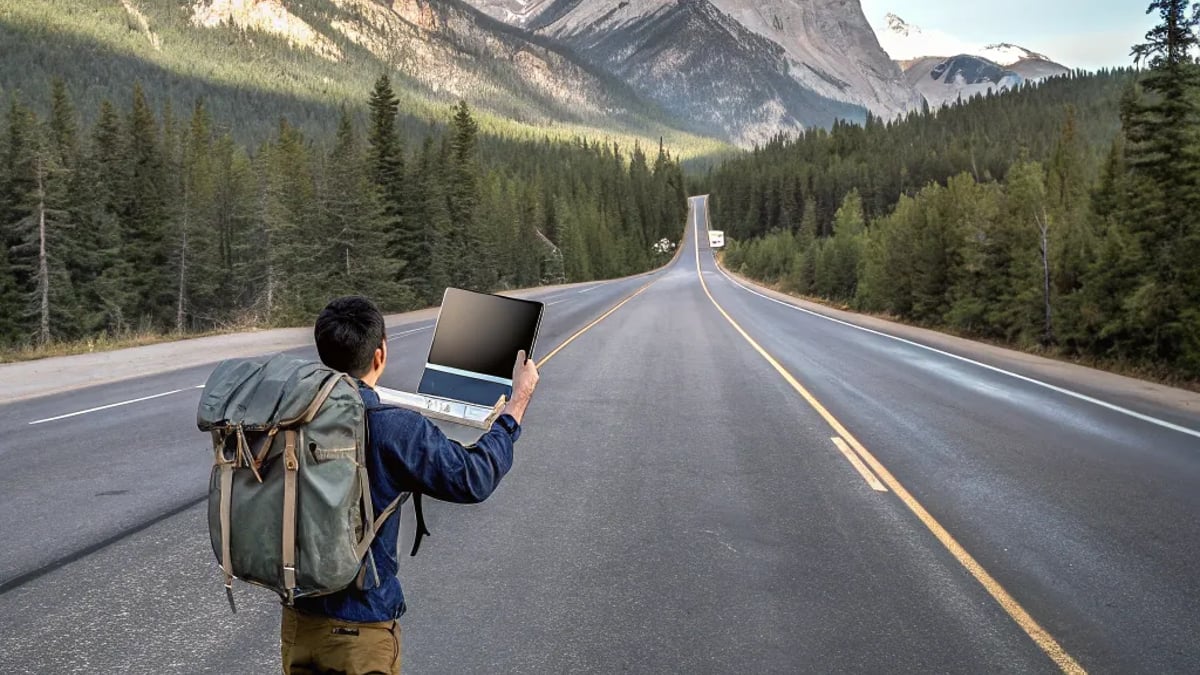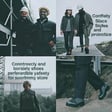
Finding the sweet spot between getting things done and experiencing new adventures is the eternal challenge for digital nomads, road warriors, and travelers who need to maintain work responsibilities. The open road beckons with endless possibilities, yet deadlines and obligations don't disappear simply because the scenery changes.
The Productivity-Exploration Dilemma
Anyone who's attempted to work while traveling understands the fundamental tension between productivity and exploration. This tension mirrors what organizational researchers Mary Benner and Michael Tushman called "the productivity dilemma" in their influential work on how businesses balance exploitation (using what they already know efficiently) versus exploration (discovering new possibilities).
"The key challenge for any traveler maintaining professional responsibilities is finding the rhythm that allows for both focused work and meaningful experiences," says travel productivity coach Jamie Russo. "Without this balance, you either end up with all work and no play, or a constant struggle to meet basic obligations."
This balancing act isn't just about time management—it's about mental energy, context switching, and creating sustainable systems that work specifically for mobile lifestyles.

The Cost of Constant Context Switching
When you're constantly moving between work mode and exploration mode, your brain pays a price. Research shows that frequent context switching can reduce productivity by up to 40% (University of California, Irvine).
For road warriors, this effect is amplified by:
- Changing physical environments
- Variable internet connectivity
- Unpredictable schedules
- New stimuli demanding attention
Carlos Martinez, a software developer who's been working from the road for three years, shared his experience: "My first month trying to code while traveling through Southeast Asia was a disaster. I'd work for 30 minutes, then get distracted by something amazing outside my window, then struggle to get back into flow. I missed deadlines and didn't fully enjoy the experiences either."
Creating Your Productivity Rhythm on the Road
The most successful road-based professionals don't try to multitask—they create distinct rhythms that honor both productivity and exploration needs.

Time Blocking with Geographic Intentionality
Rather than trying to work a little each day while traveling, consider adopting a more intentional approach that aligns with your geographic location:
Work-First Locations: Designate certain destinations as primarily productivity-focused. These might be places with excellent workspaces, reliable internet, or fewer distractions.
Exploration-First Locations: Identify locations where exploration takes priority, and either take time off or maintain only minimal work responsibilities.
Digital nomad and marketing consultant Sarah Williams explains her approach: "I'll spend two weeks in a city like Lisbon or Chiang Mai where I know there's great internet and coworking spaces. I'll work intensely, maybe 50-60 hours per week. Then I'll head to a more remote location for a week where I only check email for an hour each morning and focus on experiences."
This approach mirrors what researchers studying work-life balance call "segmentation"—creating clear boundaries between different life domains rather than trying to integrate them constantly.
The 3-2-2 Method for Road Warriors
For those with more structured travel schedules, the 3-2-2 method provides a weekly framework:
- 3 days of deep, focused work
- 2 days of lighter, maintenance work
- 2 days of pure exploration and rest
This creates a sustainable rhythm that allows for both productivity and meaningful experiences without constant context switching.
Optimizing Your Mobile Workspace
The physical setup of your mobile office dramatically impacts your ability to maintain productivity while traveling.
The Minimum Viable Workspace
While the ideal setup varies by profession, most road warriors benefit from establishing a "minimum viable workspace" that can be quickly deployed anywhere:
- Noise-canceling headphones - Perhaps the single most important tool for creating focus in variable environments
- Portable second screen - For tasks requiring more screen real estate
- Ergonomic considerations - Portable keyboard, laptop stand, or travel chair
- Consistent background - Some digital nomads travel with a small backdrop for video calls
"Having a consistent workspace setup that I can recreate anywhere—from a hotel room to a beachside café—helps my brain switch into work mode more quickly," explains travel writer Maya Johnson. "The physical cues tell my brain it's time to focus, regardless of whether I'm in Tokyo or Tulum."
Connectivity Contingency Planning
Internet access remains the most unpredictable aspect of road-based work. Successful road warriors develop layered connectivity strategies:
- Primary connection (local SIM or eSIM)
- Backup hotspot device
- Downloaded offline work materials
- Pre-identified reliable workspaces in each location
How Does Location Affect Your Work Style?
Different environments naturally lend themselves to different types of work. Learning to match your work tasks to your environment can dramatically improve both productivity and enjoyment.
Matching Tasks to Environments
Consider how different locations might be optimal for different types of work:
Inspiring but potentially distracting locations (cafés with views, public parks):
- Creative brainstorming
- First drafts
- Big-picture planning
- Reading and research
Quiet, controlled environments (hotel rooms, libraries, coworking spaces):
- Deep focus work
- Client calls
- Detailed analysis
- Deadline-driven tasks
Travel blogger Elena Sanchez notes: "I've learned to save my writing tasks for mornings in scenic cafés where the energy fuels my creativity, but I schedule my accounting and administrative work for the quiet afternoon hours in my accommodation. Working against this natural rhythm just leads to frustration."
The Exploration-Productivity Cycle
Rather than seeing exploration and productivity as competing forces, the most successful road warriors view them as complementary elements of a virtuous cycle.
How Exploration Fuels Productivity
Research in organizational psychology suggests that periods of exploration can actually enhance subsequent productivity by:
- Providing fresh perspectives and insights
- Reducing burnout and mental fatigue
- Stimulating creative connections
- Creating natural work boundaries
"My best work ideas often come during my exploration days," says photographer and digital nomad James Chen. "When I'm hiking a mountain trail or wandering through a new city, my mind makes connections it never would sitting at a desk. Then when I return to work mode, I'm not just more refreshed—I have new approaches to try."
Structuring Productive Exploration
Not all exploration is created equal. To maximize the benefits of your non-work time:
- Practice presence - Fully disconnect during exploration time
- Seek variety - Different types of experiences stimulate different parts of your brain
- Allow for processing time - Build in reflection periods after significant experiences
- Capture insights - Have a system for noting work-relevant ideas without fully switching to work mode
The Two-Way Process: Personal and Professional Needs
Work-life balance researcher Susan Lewis observes that achieving balance "is to adopt a system that is conceptualized as a two-way process which considers the needs of the workers as well as those of the employer." For independent road warriors, this means honestly assessing both your professional obligations and personal exploration needs.
Auditing Your Balance
Regularly assess how well you're balancing productivity and exploration by asking:
- Am I meeting my professional commitments and goals?
- Am I experiencing the locations I visit in meaningful ways?
- Do I feel energized by both my work and exploration time?
- Is my current approach sustainable for the long term?
Digital nomad coach Robert Torres recommends a monthly "balance audit": "At the end of each month, I review my calendar and honestly assess whether I've honored both my work commitments and my reasons for traveling in the first place. If either side is suffering, I adjust my approach for the next location."
What About Technology? Tools for the Balanced Road Warrior
While no app can solve the fundamental challenge of balancing productivity and exploration, certain tools can support your efforts:
Productivity Boundaries
- Time blocking apps (Clockify, Toggl) to maintain work schedules
- Site blockers (Freedom, Forest) for focused work sessions
- Project management tools (Trello, Asana) to track obligations
Exploration Enhancement
- Experience discovery (Atlas Obscura, Airbnb Experiences) for meaningful local activities
- Offline maps (Maps.me, Google Maps offline) for navigation without constant connectivity
- Language tools (Duolingo, Google Translate) to deepen local interactions
Integration Tools
- Reflection apps (Day One, Journey) to process experiences
- Knowledge management (Notion, Obsidian) to connect travel insights to work projects
- Automated workflows (Zapier, IFTTT) to reduce routine tasks
Common Questions: Balancing Work and Exploration While Traveling
How do I handle time zone differences with clients or colleagues?
Time zone management represents one of the biggest challenges for road-based professionals. Successful approaches include:
- Time zone anchoring: Maintaining a consistent work schedule based on your primary clients' time zone, regardless of your location
- Time zone shifting: Gradually adjusting your schedule when making significant longitude changes
- Asynchronous workflows: Developing communication systems that reduce the need for real-time interaction
"I maintain East Coast US hours regardless of where I am in the world," explains consultant David Park. "It means sometimes working evenings in Asia or early mornings in Europe, but the consistency helps both my clients and my body clock."
For team collaboration across time zones, tools like World Time Buddy for scheduling and asynchronous video platforms like Loom can bridge the gaps.
Creating Your Personal Productivity-Exploration Balance
The perfect balance between productivity and exploration is highly individual, depending on:
- Your profession and work requirements
- Your travel pace and style
- Your energy management needs
- Your primary purpose for traveling
"There's no one-size-fits-all approach," says digital nomad community founder Maria Lopez. "I've seen successful road warriors who work intensely for two months, then travel without working for one month. Others maintain a strict 5-hour morning work schedule 6 days a week, with afternoons and Sundays for exploration. The key is finding a rhythm that honors both your professional commitments and your reasons for choosing a mobile lifestyle."
Conclusion: The Sustainable Road Warrior
Ultimately, successfully balancing productivity and exploration on the road isn't about perfect time management or finding the ideal coworking space. It's about creating sustainable systems that honor both your professional obligations and your desire for meaningful experiences.
By intentionally designing your approach to work and exploration—rather than constantly reacting to changing circumstances—you can create a road-based lifestyle that enhances both your professional output and your personal experiences.
The most successful road warriors don't see productivity and exploration as competing forces but as complementary elements of a rich, location-independent life. With thoughtful boundaries, appropriate tools, and regular reflection, you can create a balance that works for your unique situation and goals.
References and Resources
- Exploitation, Exploration, and Process Management: The Productivity Dilemma Revisited - Benner & Tushman's influential research on balancing productivity and exploration
- An Exploration of the Effects of Work Life Balance on Productivity - Research on work-life balance approaches
- Nomad List - Database of cities ranked for digital nomad friendliness
- Remote Year - Resources for maintaining productivity while traveling
By creating intentional boundaries between work and exploration, matching tasks to environments, and viewing exploration as fuel for productivity rather than its enemy, you can build a sustainable approach to life on the road that honors both professional success and personal experience.
Tags

About Maya Caldwell the Author
Maya Caldwell is a seasoned digital nomad with over a decade of experience navigating the global work-from-anywhere lifestyle. She specializes in crafting innovative travel strategies that maximize productivity and adventure for remote workers.
Recommended Articles
Retirement Planning Essentials Every American Should Know
Learn essential retirement planning tips for a secure financial future, including types of plans and savings strategies every American should know.
Medicare Drug List Updates for 2026 Are Out
Discover the key Medicare drug coverage updates for 2026, including cost caps and price negotiation programs for better healthcare options.
Which iPhone Color Fits Your Style Best
In 2025, Apple tantalizes with its latest iPhone colors, each more chic and expressive than the last—think deep Titanium Blue, vibrant Product RED, and sophisticated Desert Sand. Whether your style leans toward muted sophistication, bold statements, or earthy tones, this guide reveals how your iPhone hue can harmonize with your wardrobe and lifestyle, elevating your personal tech as both a tool and statement piece. Dive in to discover which shade will perfectly reflect your personality and make you eager to flaunt your device.
Why More Adults Are Switching to Safety Footwear
In recent years, safety footwear has transcended its construction site origins, becoming a fashionable and practical choice for adults across various demographics seeking both comfort and protection in their daily wardrobes. With sleek designs, versatile features like non-slip soles and breathable materials, and a growing awareness of foot health, these modern safety shoes are not only reducing fall risks but also proving that style and functionality can go hand in hand. Discover how these shoes are revolutionizing everyday fashion and why more people are making the switch.
See the New iPhone Colors Everyone’s Talking About
Unveiling the dazzling iPhone 2025 color lineup, Apple has stunned audiences with striking hues like deep emerald, Alpine Blue, and Desert Titanium, making waves among tech enthusiasts and setting a new benchmark for smartphone aesthetics. Discover how these colors not only enhance the iPhone's premium feel but also influence its resale value, offering a fresh perspective on choosing the perfect shade for your next device.




